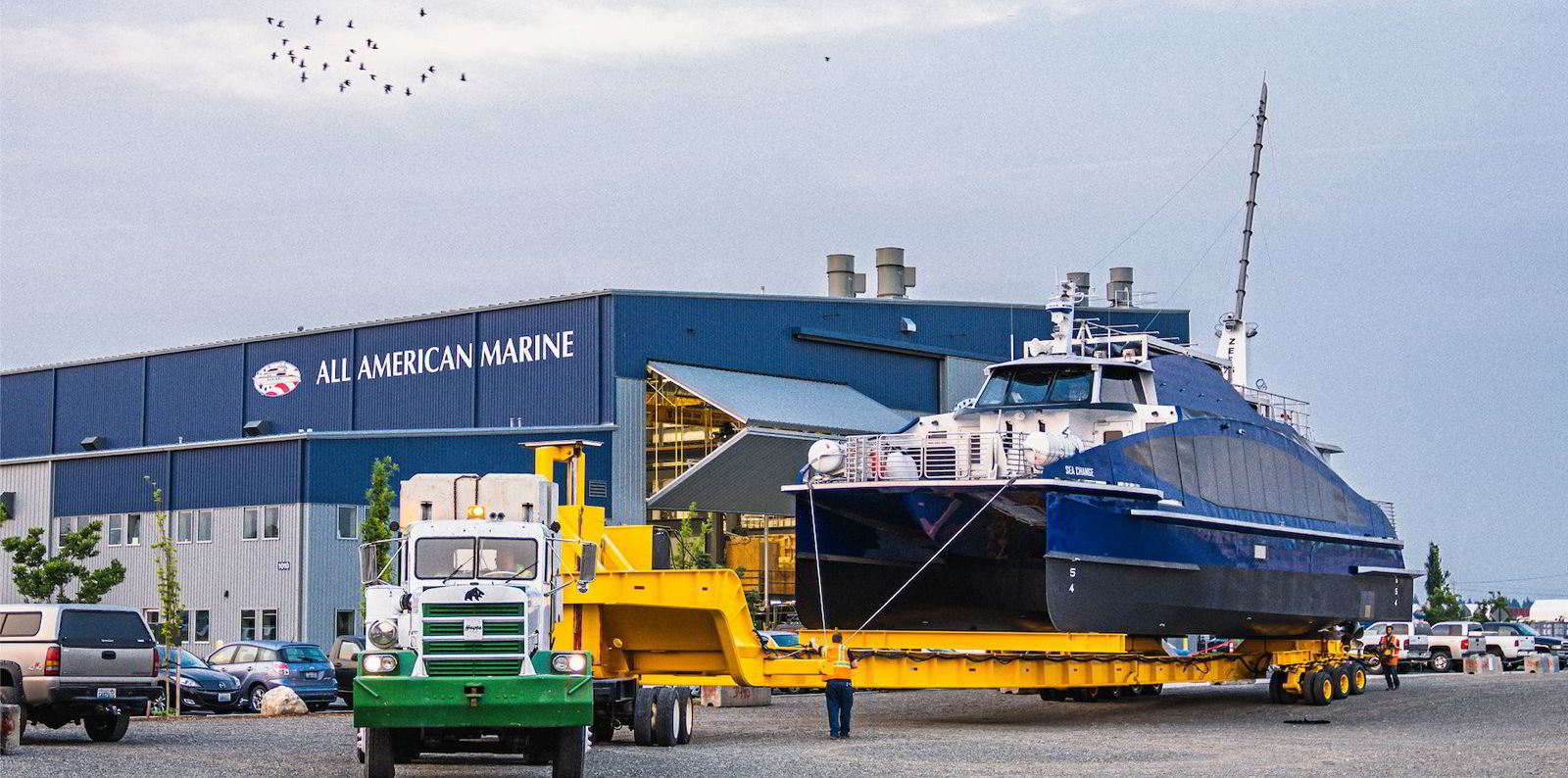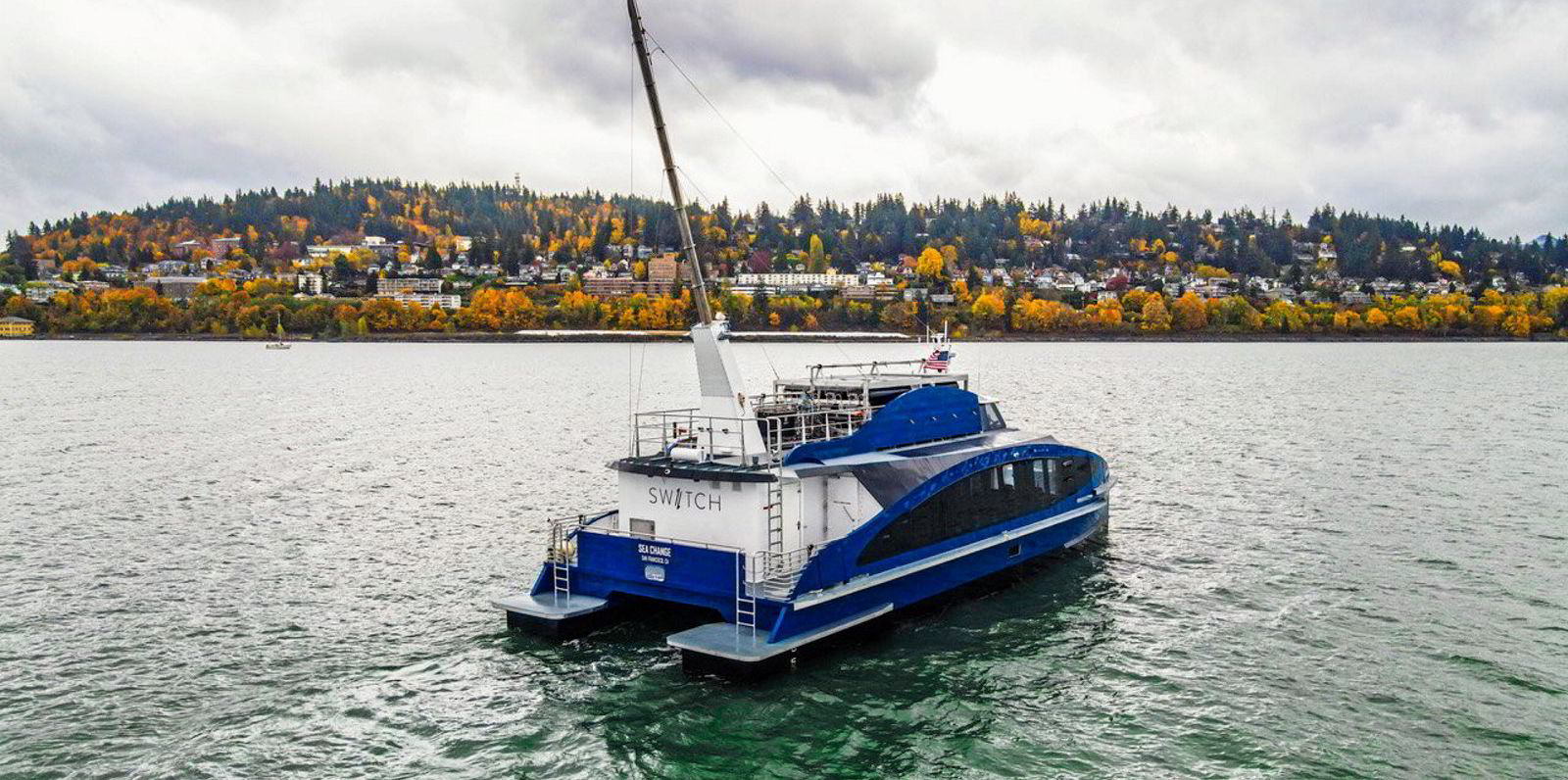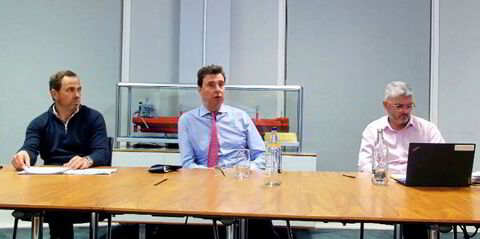The first hydrogen-fuelled ferry in the US is gearing up to make its journey to its new home in the San Francisco Bay, where it will start work to show what it can do.
- Ship type: Passenger ferry
- Capacity: 75 passengers
- Length overall: 72 feet (21 metres)
- Beam: 24 feet
- Max speed: 22 knots (41.7 km/h)
- Cruising speed: 15 knots
- Range: 300 nautical miles (555 km)
But Pace Ralli, the chief executive of owner Switch Maritime, believes it is more than a demonstration project.
With municipal transportation systems under pressure to decarbonise, the 75-passenger Sea Change could be the first of many of its size, and could be followed by even larger ferries running on hydrogen.
"We believe that there is going to be demand for more of these," he told TradeWinds. "This technology scales really nicely to larger ferries — 150 pax, 350 pax — that cities will be wanting," Ralli said, referring to the abbreviation for passengers.
The Sea Change, whose construction started at Bay Ship & Yacht in California before it was finished at Washington state shipyard All American Marine, is expected to make the journey to the San Francisco area next month.
The hybrid vessel, which is also powered by battery, was the brainchild of Zero Emissions Industries (ZEI), which started in 2017 as Golden Gate Zero Emission Marine, and developed with a $3m grant from the California Air Resources Board, the state regulator.
The company sold the newbuilding in 2019 to Switch, which was founded by Ralli and fellow Clean Marine Energy principal Volckert van Reesema, whose firm was at the forefront of LNG fuelling in the US.
Ralli said the ferry will start its operations in a demonstration period for the California Air Resources Board, which helped fund its construction, before long-term employment is found.
As the company looks to grow, Switch does not want to compete with current ferry owners, but rather to lease its hydrogen ferries to them.
Switch's goal is to use construction of the Sea Change to reduce the barriers to building these ships, from building with hydrogen technology to working with regulators to ensure approval of the ship and its operations.
Joe Pratt, chief executive and chief technology officer at ZEI, said the Sea Change was designed using off-the-shelf technology, including its hydrogen fuel cells. That is proof that the technology is here today.
"I'm 100% confident that we could deploy hydrogen fuel cell technology on pretty much any vessel that's out there right now," he said.
Why hydrogen?
If you're looking for a zero-emissions fuel, batteries and hydrogen are the only two options, said Pratt. But batteries will not do the job for most of the shipping fleet.
"Just technologically, do the physics. There's only really one solution if you want zero emissions, and that's hydrogen fuel cells," he said.

Even if the International Maritime Organization sticks to its current goal of cutting CO2 emissions by 50% by the middle of the century, the carbon cuts from fuels such as LNG will do too little to reach the goal, he said.
A key source of doubt over hydrogen is the amount of carbon typically used in its production, but Pratt said that hydrogen allows ships and ports to have zero-emissions now, and the market will ultimately provide green hydrogen, without carbon emissions in its life cycle.
"Right now electricity for use from solar and wind, in many places, is cheaper than that produced from fossil fuel," he said.
"In a shorter time than I think a lot of people might think — less than 10 years — hydrogen produced renewably is going to be cheaper than hydrogen produced from fossil fuel ... Soon, green hydrogen is going to be the cheapest option anyway."
Ralli said that in the short term some of the Sea Change's fuel, which will be delivered by truck, will be green and some will not.
"The intention [is] to run ... 100% off green hydrogen when we have that available to us," Ralli said.

But he expects much more green hydrogen to be available in the near future. He pointed to growing investment in electrolysers, which use electricity to produce hydrogen, in California and elsewhere in the US that will draw from renewable power.
Action by California is also creating opportunities for the technology, with Switch executives pointing to mandates to clean up emissions in port and proposed legislation to phase out emissions for commercial harbour craft.
"That's clearly sending a strong signal to the market that everybody has to adapt," said Switch director Elias Van Sickle.



